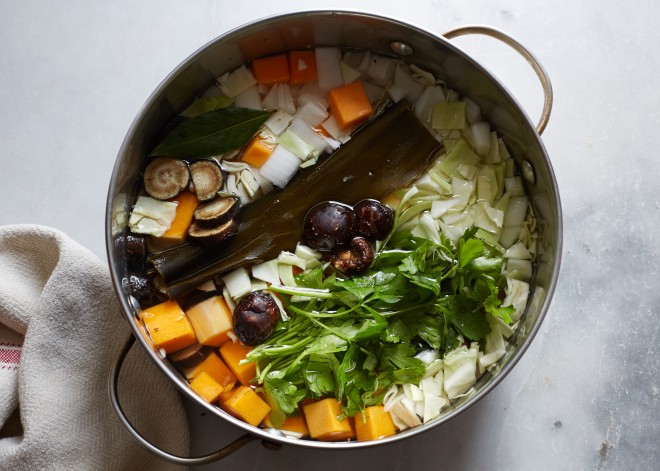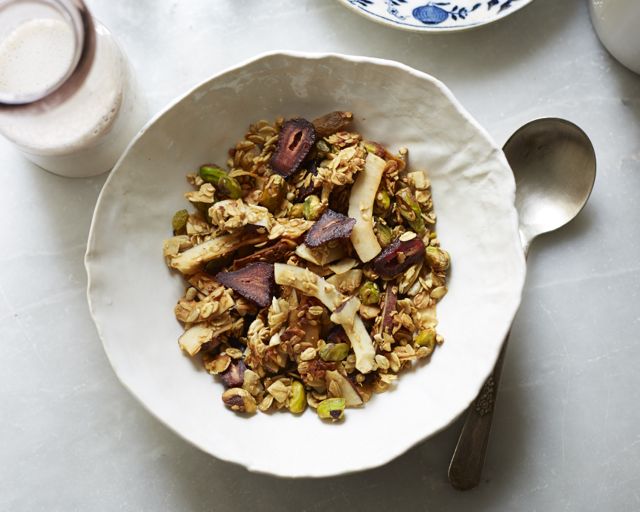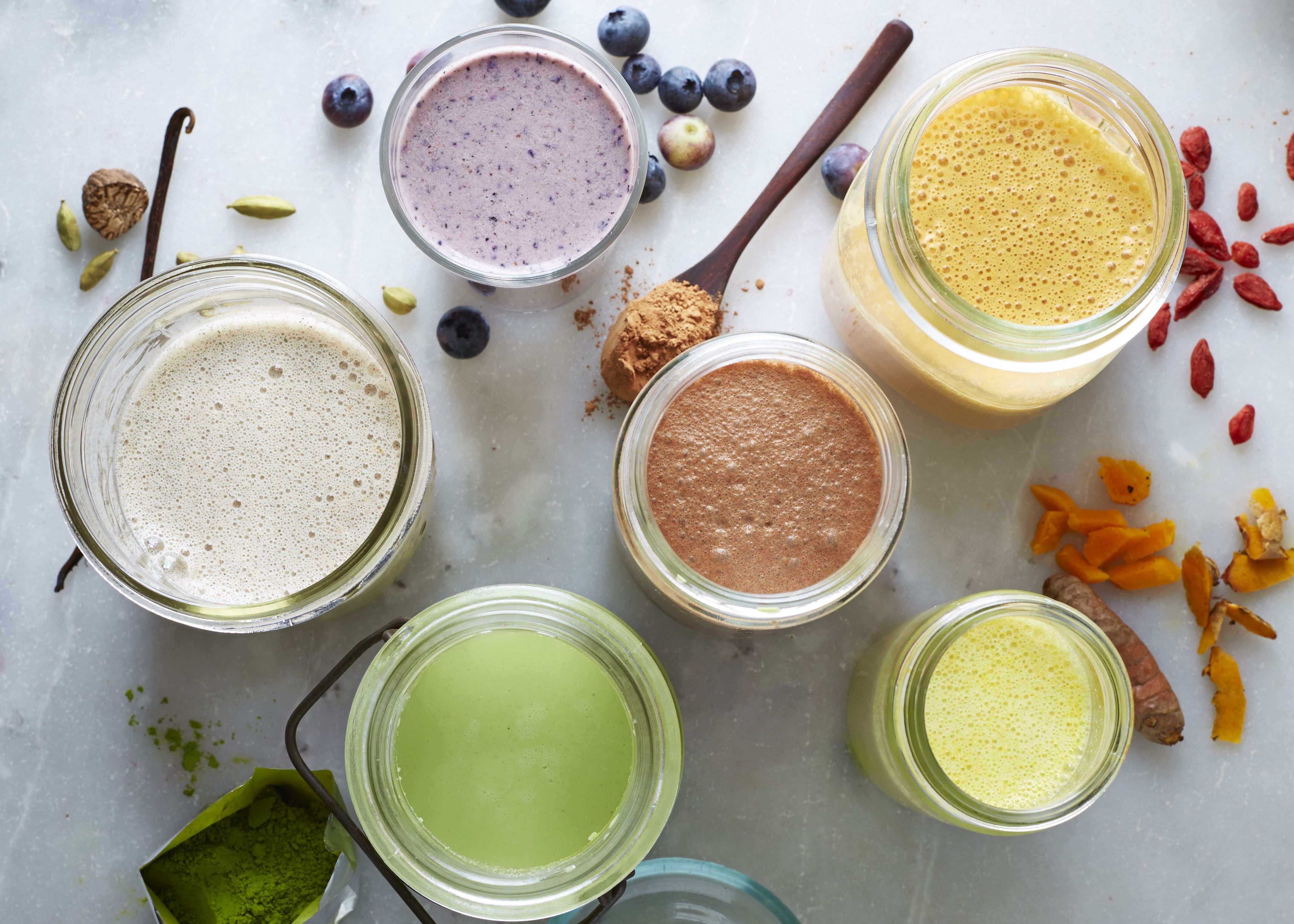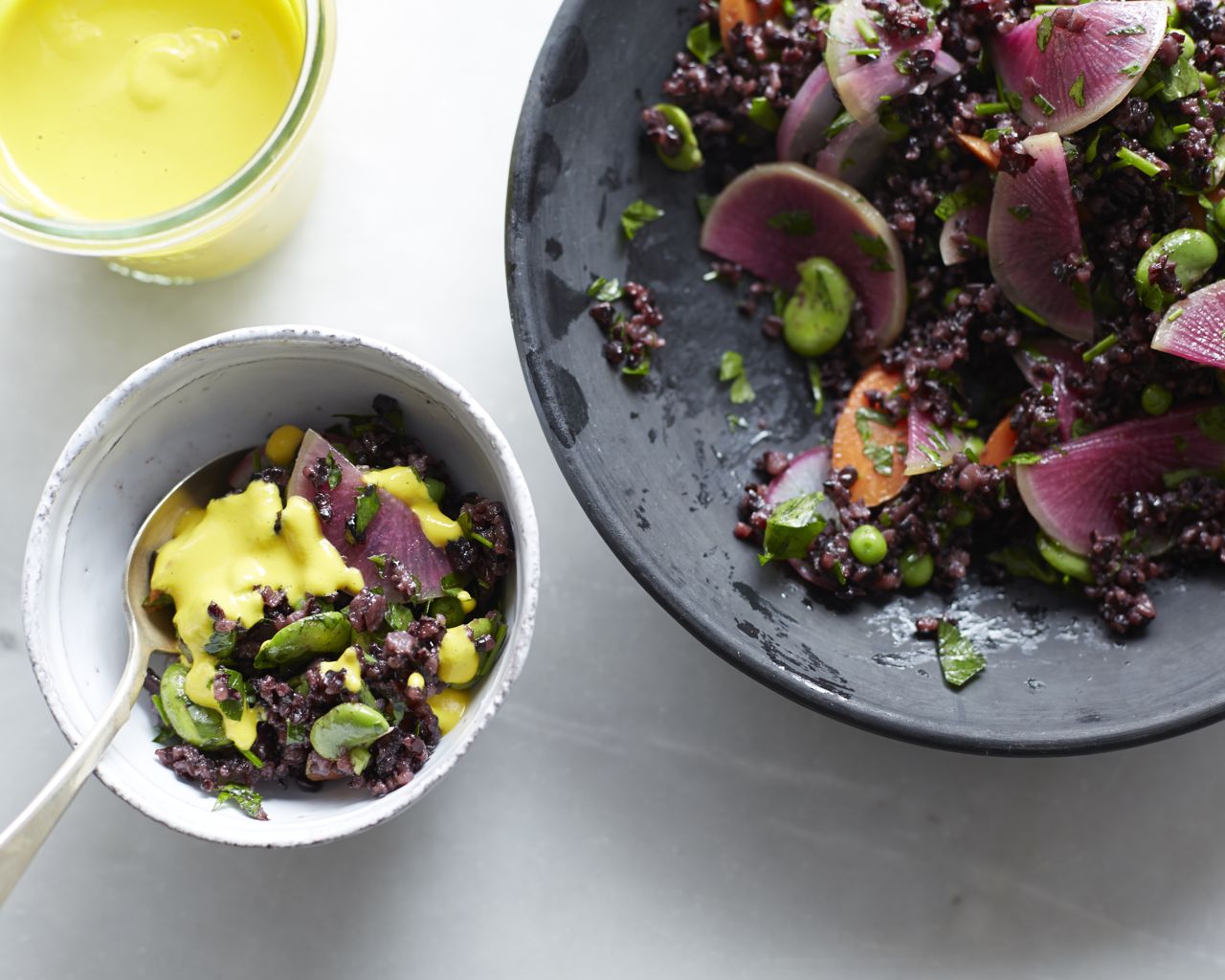Japanese broth with soba noodles and tempeh
POSTED ON January 18, 2015
Over the holidays I finally got the chance eat at Kajitsu, a vegan restaurant in Manhattan serving Shojin cuisine. Shojin cuisine is a type of Japanese cooking originating in Zen Buddhism. The best parts of the multi-course meal reminded me of Shizen –a Japanese macrobiotic restaurant where I worked in Amsterdam and wrote about in my book –and inspired in me a craving for the clean flavors of Japanese broths. A few days into the New Year I made this recipe for a dinner with family and friends, serving it with simple braised tofu (from my book) and roasted Japanese yams on the side—it was warming and fortifying, and tasted delicious with hot sake.
As I was shopping for ingredients to make this broth I found Barry’s Tempeh at my local health food store. If you live in New York and haven’t sampled this tempeh, it’s worth going out of your way to get some. Nutty, fragrant and much lighter in texture than what you’re probably used to—unless of course you make your own—this is how tempeh is supposed to taste. Barry’s is the only fresh tempeh being sold in this area. Fresh, meaning that it isn’t pasteurized before packaging. Pasteurization kills the enzymes and probiotics that are created from the fermentation process and makes the texture dense. Fresh tempeh needs to be frozen to stop fermentation; once defrosted, it will keep a couple of days in the fridge and continue to ferment resulting in a stronger flavor. When eating tempeh this fresh (and unpasteurized) you really don’t need to do much. The flavor is rich and nutty when simply pan-fried and sprinkled with salt.
What’s great about tempeh is that you are eating the whole soybean; nothing is extracted as it is with tofu production and the fermentation process helps remove phytic acid, which is particularly high in soybeans. This is the reason that any soy you eat regularly is best fermented and why miso and tamari (both fermented soy products) are good choices. Some artisanal tempeh makers are now creating tempeh with beans and chickpeas for anyone allergic to soy. I was lucky to have had the chance to sample chickpea tempeh from Byron Bay Tempeh on my last trip to Australia, it was delectable.
If you know of other fresh tempeh producers, please share in the comments. I’m always interested in sampling more!
The Washington Post interviewed me recently for an article on tempeh. It’s filled with well-researched information about its history and uses.
Click here for the link.
Al photos by Stephen Johnson
I posted this kale, avocado and flax smoothie on Healthy Eats. If you’ve been following my smoothie recipes over there, you may have noticed I’m not a fan of the typical green smoothie. This is my savory version.
Have a great week!
Amy x
Japanese vegetable broth with soba noodles and simple tempeh on the side.
Serves 4 to 6
Broth:
4 inch piece kombu
4 dried shitake mushrooms
5 bay leaves
10 inch piece burdock root, chopped
1 large onion, diced
3 medium carrots, chopped
2 stalks celery, chopped
2 cups diced winter squash
2 cups diced green cabbage
Handful parsley
8 cups filtered water
Vegetables:
1 medium daikon, peeled and roll cut
1 medium carrot, roll cut
2 cups squash, cut into ¾ inch triangles
Large pinch seaweed, I used laver (wild Atlantic nori) or wakame
1 tablespoon toasted sesame oil
2 inch piece ginger, peeled and finely chopped
3 large garlic cloves, finely chopped
½ teaspoon tamari, plus more to taste
Sea salt to taste
2oz Beech mushrooms, separated and ends trimmed
Tempeh:
2 tablespoons toasted or untoasted sesame oil, plus more as needed
½ pound tempeh, or more as needed, sliced into ¼ slices
Flakey sea salt to taste
To serve:
1 small bunch watercress
I package 100% buckwheat noodles, cooked, rinsed and drained
Nanami togarashi (Japanese hot pepper), optional
Make the broth:
Add all the broth ingredients into a large pot and bring up to a boil, cover pot and simmer 2 ½ to 3 hours. Remove from heat, stain out vegetables (compost them) and return broth to large pot.
Add the vegetables:
Bring the broth to a boil and add daikon and carrots cook for 2 minutes then add squash. Once broth returns to a boil, cover pot, reduce heat to low and simmer for 6 to 8 minutes or until vegetables are just cooked through.
Meanwhile warm sesame oil in a skillet over medium heat, add ginger and garlic and sauté for 3 minutes or until golden. Remove from heat and add to pot with vegetables. Stir in tamari and sea salt to taste, Add mushrooms and set aside covered while you cook the tempeh.
Cook the tempeh:
Warm sesame oil in a wide skillet over medium heat. Add tempeh slices to fit in a single layer, you will most likely have to do this in 2 or more batches. Cook tempeh on each side until golden, about 3 to 4 minutes each side. Remove from heat and sprinkle with coarse salt. Repeat with remaining tempeh.
To serve:
Add a handful of soba noodles to each serving bowl. Warm broth (gently) if it’s no longer hot, stir in watercress and ladle broth and vegetables over noodles. Serve hot topped with a sprinkling of Japanese hot pepper and tempeh on the side.
POSTED IN Gluten free, Mains
never miss a recipe!







 tweet it
tweet it pin it
pin it









Hi Amy
I gave your book to our vegan daughter this Christmas and ordered one for me yesterday. Your knowledge about eating healthily and well so inspires me. Before I started going to your blog and book, I thought I knew a great deal about vegetarian eating, but you have really helped refine what I do. Thank you dear lady! My next project is to discover what’s wrong with tofu, because I’ve been eating a fair amount for years. Thank you again! And God bless you.
Scott
Hi Scott,
Thank you for writing and for your support with my book! Yes, it’s true many of us rely too heavily on tofu and other unfermented soy products but there is nothing wrong with it in small amounts. Think of the amount of tofu in traditional miso soup, it’s not much. Once you start cooking your own beans you’ll find you don’t need so much tofu.
Happy cooking!
Amy
Amy, I am loving your cookbook and have made several of your recipes already in the last few weeks since getting it. The eggplant curry and beet fennel salad are my favorites so far. And I like your approach to cleansing, I share very similar perspectives in my own life and when helping clients. I’m jealous you have access to unpasteurized tempeh. This soup and the savory spin on the green smoothie looks lovely.
I love Barry’s tempeh! Always have some in my freezer. Thanks for the link to the Washington Post article. Recently made your adzuki bean stew from the new book and it was very delicious and restorative. xo
Lovely recipe! I always love Japanese and Japan inspired food 🙂
Love it. We eat like this all the time as well. I’ve been making some awesome miso soups lately, but haven’t had a chance to blog them. Just getting the pics/ingredients on my FB page. I look forward to trying your tempeh preparation as well. We usually add tofu w/ the veggies, sea veggies, etc., but I certainly enjoy having good alternatives w/ tempeh. Beautiful bowl of nourishing, warming soup! ~Tracy/PlantBasedSolution
I am so into broths at the moment; living in London means I am surrounded by cold and find brths super nourishing in wintertime. So thanks so much for sharing this. I shall give it a go.
Also wanted to say I got your cook book and am totally and completely in love.
Made the first (of many!) recipes from the book this weekend and it came out a dream. So much so I’ll probably blog about it soon and let you know when it’s up 🙂
Thanks for the inspiration.
Hi Amy
I bought 5 of your wonderful books for Christmas gifts, I kept one. The family keep telling me how brilliant their book is. Thank you so much, The presentation is delightful, the recipes are mouthwatering and top notch healthy.
I am mostly raw vegan, but am enjoying the fabulous tastes you have created.
I received your book as a Christmas gift from my mother and I love it! I love the food science aspect of it which I find can be lacking in some cookbook. I particularly love the grains/beans chapter and the way that you prepare these whole foods so I have made it a regular habit to soak all those things instead of always reaching for their canned version. This soup looks so wholesome and warming, just what I need on these (very) cold winter nights when I am chilled down to my bones. Thank you so much for your inspiration, motivation and amazing recipes.
Hi Amy
This recipe looks great, like you I, too enjoy Japanese food and the flavour these foods produce. I would love to make this however I don’t think that I can buy burdock root anywhere here in Australia, can you recommend another ingredient to replace it with?